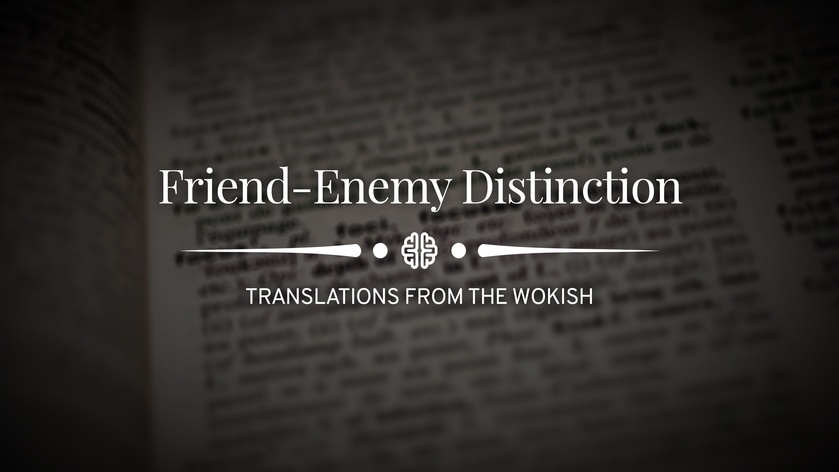“What is culturally relevant teaching?” That is the question I set out to answer four years ago.
Back in 2020, my wife and I were preparing to be parents and I had started researching the state of our educational system. I quickly realized that I knew essentially nothing about what was happening in our schools, despite attending them for the first twenty-two years of my life.
The buzzwords were everywhere – “diversity, equity, and inclusion (DEI),” “social-and-emotional learning (SEL),” “restorative justice (RJ),” and “culturally relevant teaching,” to name a few. I was completely lost, but I knew that some people on the TV were telling me that DEI, for example, meant teaching kids to respect others and treat people equally. Others were telling me that DEI was “brainwashing.” Clearly DEI was a point of contention, which confused me. How could anyone have a problem with diversity? How could anyone have a problem with equality? How could… wait. Does “equity” mean “equality”? What the hell is equity? I was curious.
After some quick google searches, I learned that “equity” meant “giving all kids an equal shot at the same outcome.” “Well,” I thought, “that’s insane!” I had recently read some Thomas Sowell, and he completely dismantled the “disparities equal discrimination” spell that I had fallen victim to in my early 20s. I knew that all children were different and, for various reasons, should be expected to reach different educational outcomes. The only way to produce equal outcomes between children is to artificially create unequal inputs between children. If you want all kids to cross the finish line at the same time, you must create a custom track for each child. Fast kids get weighted vests and obstacles. Slower kids get rollerblades and a slope.
How did schools get the idea that equality of outcomes was at all possible, let alone desirable? I was curious, so I started researching the “equity” pages of various school websites in my area. It was there that I kept running into “culturally relevant teaching” as an “equitable” practice for schools. Apparently “culturally relevant teaching” was a way to help schools produce equal outcomes between students.
“Ok,” I thought. “Let’s figure out what culturally relevant teaching is.” I was curious. I wanted to know what it was and how it was tied to “equity.” I wanted to know how I had never encountered the term in my early schooling, yet it was now ubiquitous on every district page I looked at. “It had to have come from somewhere,” I thought. Who created it?
I moseyed on over to Google Scholar for the first time in over a decade. I searched for “culturally relevant teaching,” and hit “enter.” I received over three million results in a tenth of a second. Whoa! The results overwhelmed me, so I set my eyes on the two most cited – Toward a theory of culturally relevant pedagogy (over 12 thousand citations); and But that’s just good teaching! The case for culturally relevant pedagogy (over 6 thousand citations).
Both articles were authored by Gloria-Ladson Billings in the mid-1990s. I started with Toward a theory of culturally relevant pedagogy, the most cited result. It was there that I first encountered the term “critical consciousness,” which Billings identifies as the central learning objective culturally relevant teaching. “Culturally relevant teaching must,” she wrote, “[lead to the] development of a sociopolitical or critical consciousness.” I now know that critical consciousness is the cult belief that everything in society is designed to oppress you, and the only way to come to know “the truth” of the world is to become a Marxist committed to the “prophetic vision of social justice,” to quote Henry Giroux (writing about Paulo Freire’s critical theory of education.) But, at the time, all I knew was that I needed to know more. “Wait… what? The central goal of education is the development of a *political* consciousness,” I thought. “What the hell is going on here?” I was curious.
In But that’s just good teaching, I encountered Paulo Freire’s name for the first time. I learned that culturally relevant teaching is an “approach similar to that advocated by noted critical pedagogue Paulo Freire.” I also learned that “critical consciousness” was something Ladson-Billings wasn’t mincing words about. “Students,” she said, echoing her statement in Toward a theory of culturally relevant pedagogy, “must develop a critical consciousness through which they challenge the status quo of the current social order.”
“Excuse me?!” Culturally relevant teaching was all the rage in every school district I investigated. I now recognized Gloria’s name all over the source documents I found. Why on earth are all of the schools invested in a program that teaches kids to “challenge the status quo of the current social order?” Who is Paulo Freire? What are “inequities,” and why must students learn to “critique the cultural norms, values, mores, and institutions that produce and maintain” them? How did all of this become “good teaching”?
I tell you this story for a purpose, though. A purpose that starts with a question.
I have a nagging question, one that I haven’t been able to shake since the very early days of my research: what happened to curiosity?
I didn’t fall into the rabbit hole that is “woke.” I was dragged into it by my curiosity. I had no choice in the matter. What am I looking at? Where did this come from? Who decided this should be in schools, and what is the objective? These are the questions that broke the cult’s spell over me.
Ten years ago, I was fully immersed in the Woke “cult milieu.” I didn’t ask any questions, I just assumed that I was a “good person” on the “right side of history” because I supported anything and everything that sounded virtuous. It never occurred to me that the language I was using may hide contrived terms and radical agendas; never occurred to me that education today could be extremely different than the education I received 20 years ago; never occurred to me that there may be reasons why six-out-of-ten children in Wisconsin aren’t proficient in reading or math.
According to Robert J. Lifton, an American psychiatrist who has spent decades studying cult psychology, “the most basic feature of the thought reform environment…is the control of human communication.” Cults do everything they can to control what their disciples can see, read, think, hear, say, and write. One of their primary tools cults deploy for killing a bubbling curiosity that may lead someone to stray from cult doctrine is the “thought terminating cliché.”
“The language of the totalist environment is characterized by the thought-terminating cliché. The most far-reaching and complex of human problems are compressed into brief, highly reductive, definitive-sounding phrases, easily memorized and easily expressed.”
“But that’s just good teaching!” is a thought-terminating cliché that no longer works on me. It did prior to 2020, but after reading Gloria Ladson-Billings’ work, I now know that, for her, “good teaching” means practicing critical theories of race, sex, gender, and culture on children. That is to say, I now know the “good teaching” children receive in schools is actually systematized brainwashing.
If we’re going to break the spell the Woke cult has caste over our entire educational infrastructure in the United States, we’re going to need curiosity to make a massive comeback. People need to start asking basic questions – the “who, what, when, where, and why” – and follow their curiosity down the rabbit hole.
As I write this, our elite universities are in open revolt. The question of the day is, “How did U.S. universities become so antisemitic?”
Aren’t you curious?
Sources:
- Ladson-Billings, G. (1995). Toward a theory of culturally relevant pedagogy. American Educational Research Journal, 32(3), 465–491.
- Ladson‐Billings, G. (1995). But that's just good teaching! The case for culturally relevant pedagogy. Theory into practice, 34(3), 159-165.
- Lifton, R. J. (1989). Thought reform and the psychology of totalism: A study of "brainwashing" in China. University of North Carolina Press.


















